Discover CODE’s Unique Entrance Installation!
The distinctive shape and façade of the former Dimitrov building make it instantly recognisable from afar, and with the birth of CODE, a new installation now enhances its uniqueness. The NagyMolnar artist collective (Krisztián Nagy and Csaba Molnár) designed this special artwork specifically for the entrance of the digital experience centre. True to the institution’s name, the piece even contains hidden codes. Krisztián Nagy spoke to us about the installation, light sculpture and sources of inspiration.
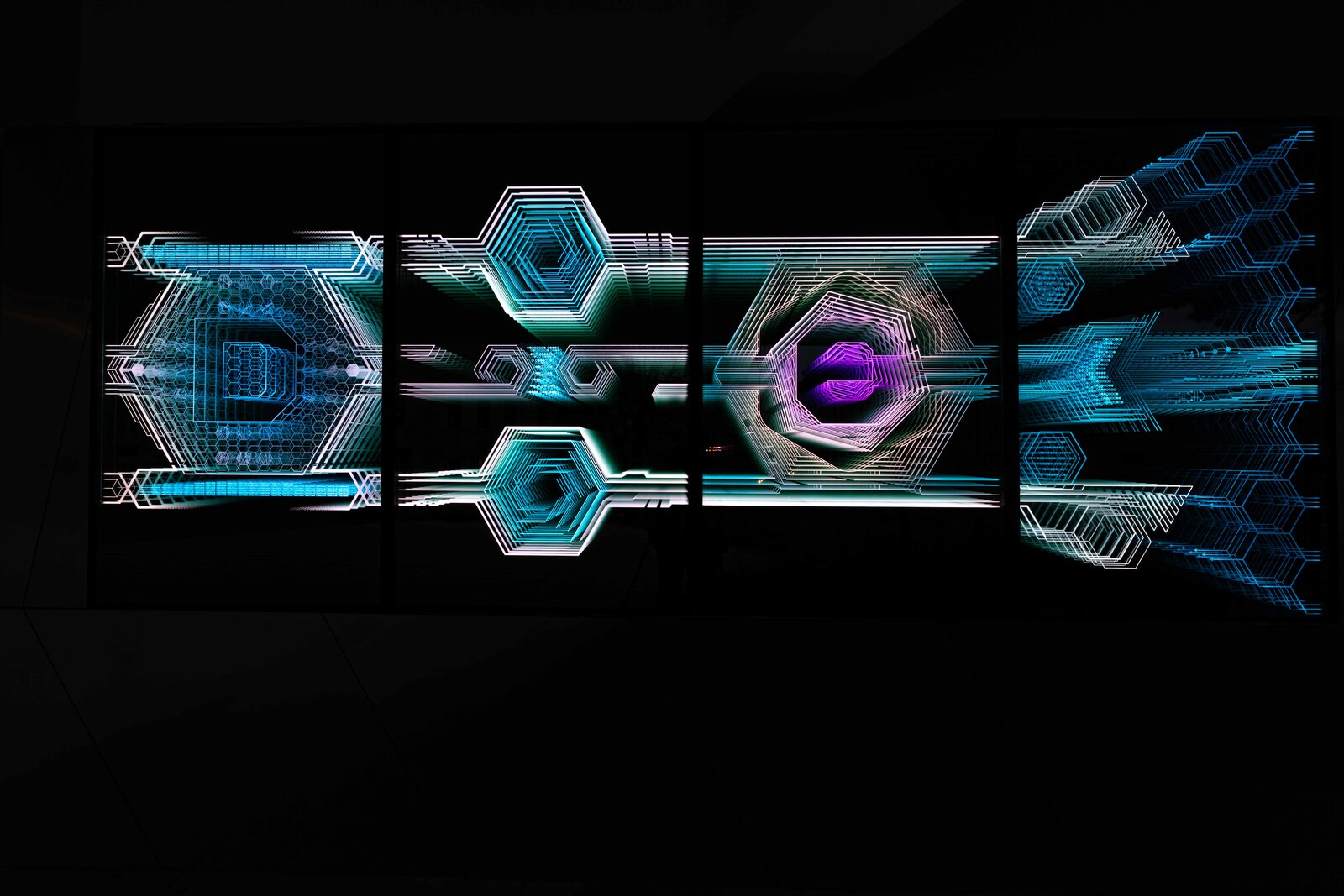
Could you tell us a bit about why you chose light sculpture as an artistic form? And what exactly is light sculpture?
The term "light sculpture" was perhaps first associated with us by Dr Márton Orosz, Director of the Vasarely Museum in Budapest, in a study about our work. When we began our artistic journey, he sought an appropriate classification for our creations and coined the term for our pieces, suggesting that they could even evolve into a completely new, trendsetting direction in the future. Interestingly, from 2024 onwards, we have indeed started creating light sculptures alongside our wall pieces. These sculptures can be placed in space, walked around and viewed from different angles, offering unique perspectives from every viewpoint.
Both of us are great admirers of Vasarely, regarded as the father of OP Art. While he used light in a different way, many of his objects reflect light onto walls or experiment with shadows. Hungarian light art has always been outstanding on a global scale, leading us to the work of György Kepes, whose philosophy and artistic legacy serve as a major inspiration for us. We place ourselves on the boundary between OP Art and Light Art, as elements of both are present in our work.
Light is one of the most fascinating materials: it immediately captures attention, influences our mood, and is often seen as a source of life itself. Painters tirelessly strive to depict light on their canvases, whereas we approach it differently, composing directly with light itself.
For us, light is the very material through which we create compositions and convey themes. From the beginning, we aimed to present light in its purest form, whether in our wall pieces or, more recently, in our light sculptures. There should be no distractions - no visible screws or structural elements - only "pure light" should be perceptible in our work.
Another crucial aspect was ensuring that the light appears indirectly, meaning that the light source or LED points themselves are not directly visible. We believe these essential qualities create a sort of "mystical effect" for the viewer. Since human nature is inherently curious, people instinctively try to decipher the visual experience and uncover how it was created.
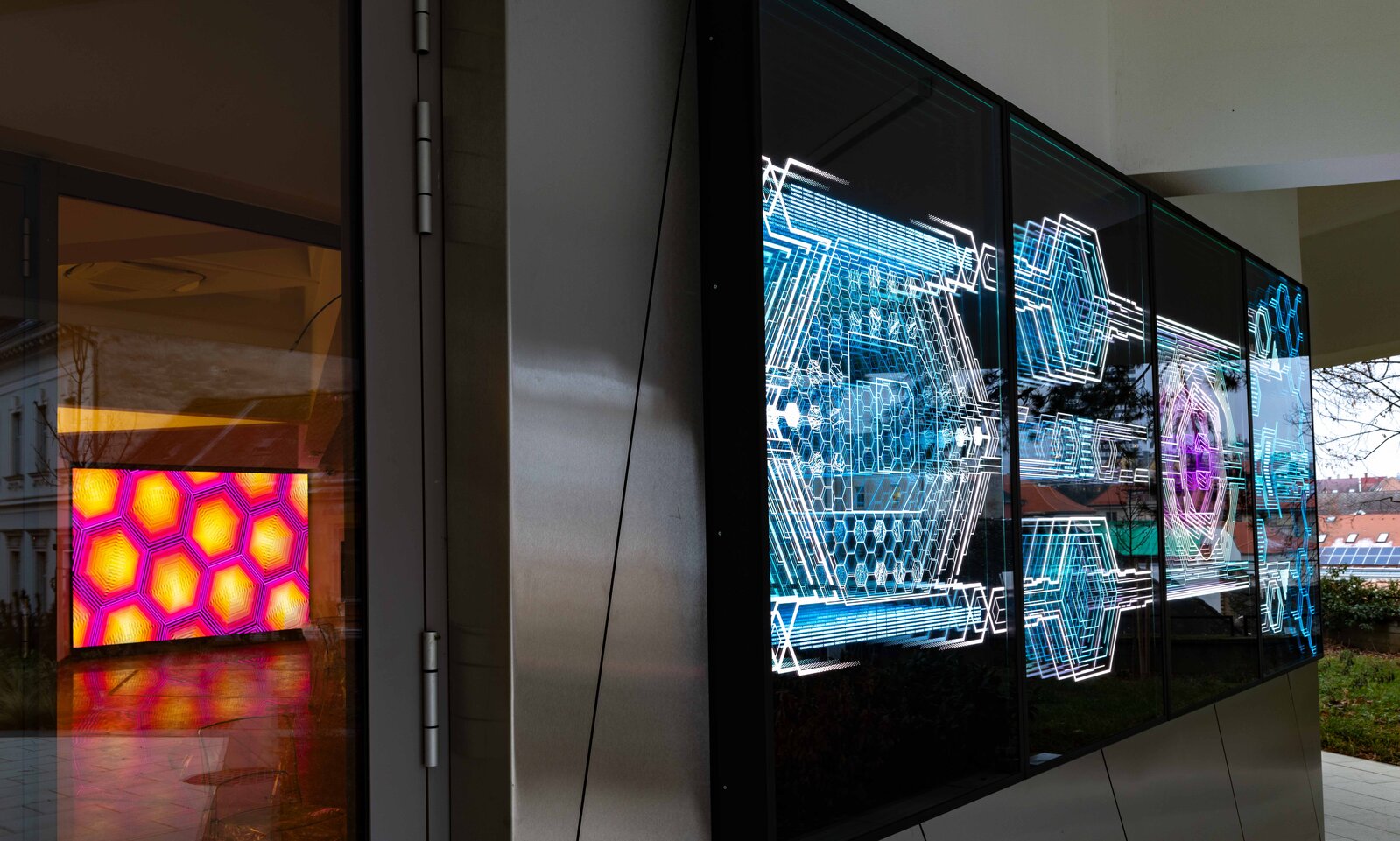
How does geometry connect to your art?
OP Art, or optical art, utilises line systems and fundamental geometric shapes such as squares, circles and triangles, arranging them according to a pre-conceived plan depending on the desired composition. Its origins can be traced back to the constructivist movement, and our use of geometry and geometric forms also stems from this tradition.
In our case, the process gets more complex, as even in the design phase, when we create a graphic or drawing, we must think in multiple dimensions. We need to anticipate how reflections will alter the visual effect. Conversely, if we start with an imagined visual outcome, we must work backwards to determine the two-dimensional drawing required to achieve the desired result through the physics of reflection.
This becomes even more intricate in our latest works, our light sculptures, where the composition can be viewed from six different angles, with reflections appearing in all directions. When creating these pieces, we must predict the final outcome while taking these properties into account. Of course, even today, certain compositions still surprise us - usually in a positive way -, often leading us towards new artistic directions.
Fundamentally, we use geometric representation, as this is characteristic of the artistic movement we are part of. However, we do occasionally venture into a more lyrical approach, as seen in Iris, our perhaps most popular series, which we subtly incorporated into CODE’s façade. Another example is our newer series, Future Landscape, where, for the first time in our body of work, colours are not created with light but with pigments.
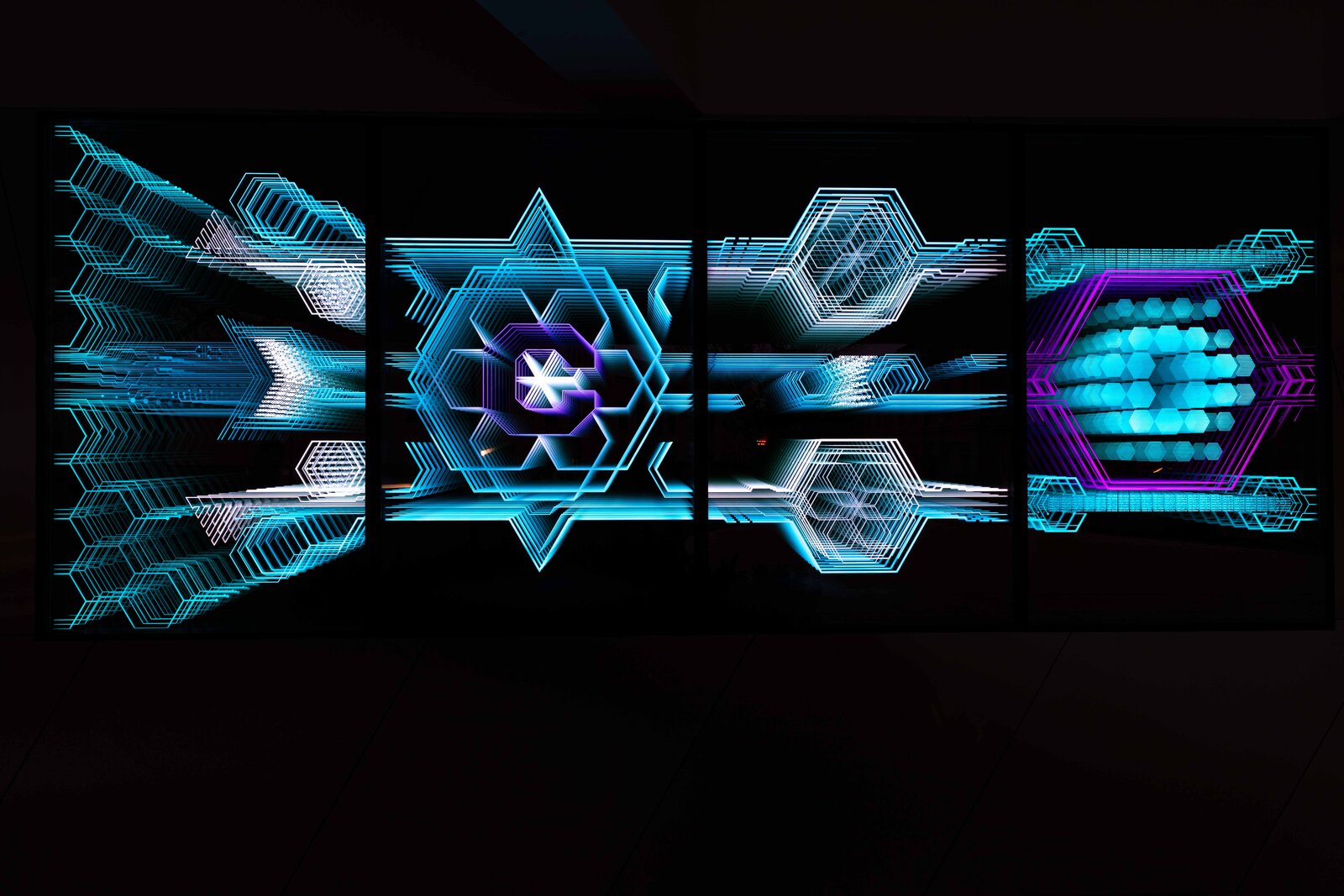
What are your sources of inspiration?
Our work is influenced by a wide range of environmental stimuli: natural phenomena, philosophical ideas and personal experiences. These inspirations may come from our immediate surroundings or from distant parts of the world. In addition to these, two of the great artists of the past, Victor Vasarely and György Kepes, are worth mentioning. Among contemporary artists, we would like to mention Chilean-born Iván Navarro, who also deals with infinite space and reflections, but his subjects and his technique of illuminating with light are completely different from our own.
Music also plays a significant role in our creative process. Composers such as Hans Zimmer, Ludovico Einaudi and Audiomachine provide strong inspiration, as do scientific figures like Stephen Hawking and Nikola Tesla, whose books and lectures continue to fascinate us. Additionally, science fiction literature (e.g., Isaac Asimov) and films such as Interstellar have a profound influence on our work.
If I had to highlight a single piece that has greatly impacted me recently, it would be György Kepes’ 1973 work Glowing Columns, exhibited at LAM Budapest. This piece is a recreation of an original artwork first presented in Boston. The relationship between science and art was Kepes’ lifelong pursuit, and it is also something that deeply engages us.
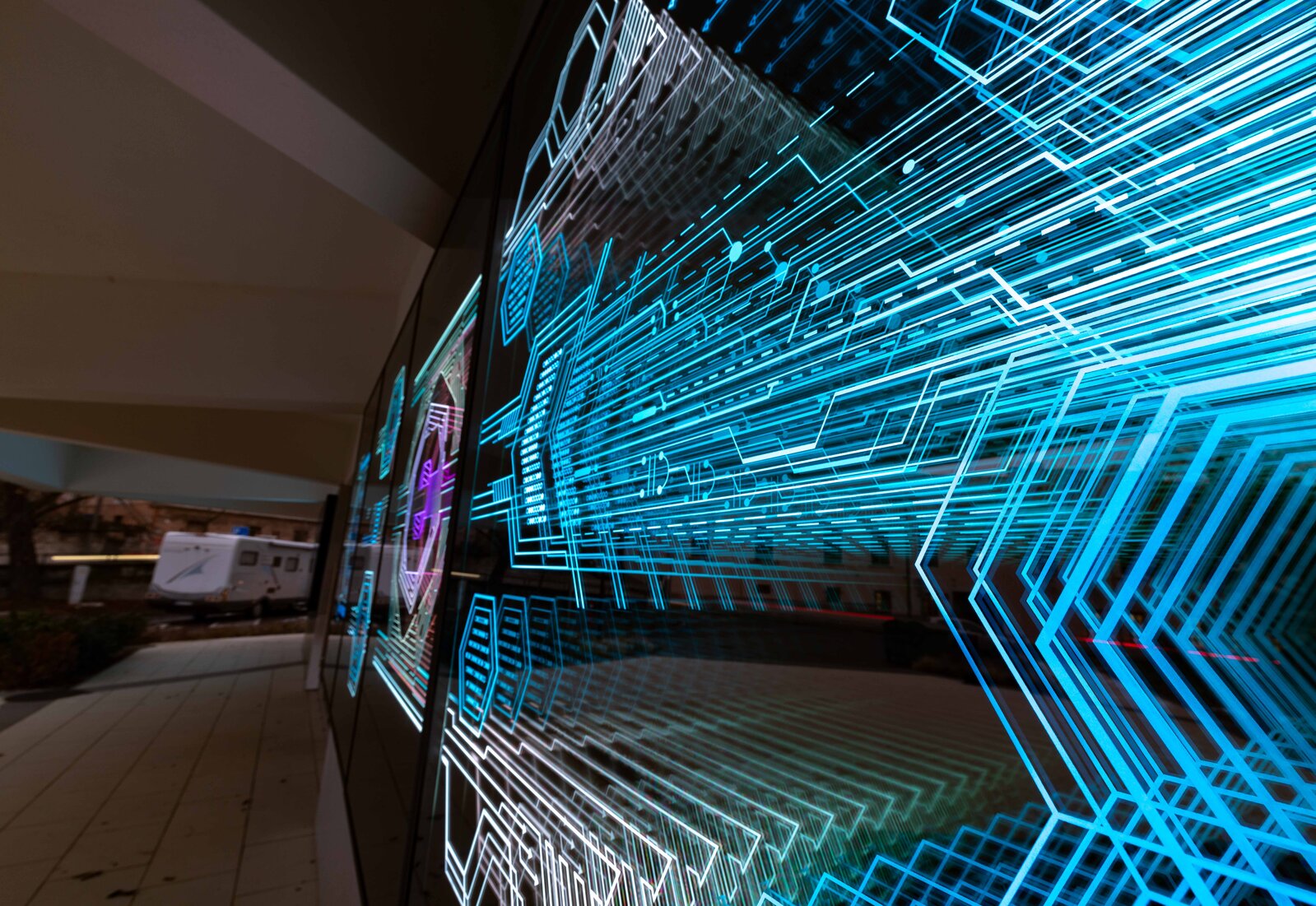
Was the installation at CODE’s entrance specifically created for CODE? What was the inspiration Behind it?
The artwork at CODE’s entrance is by far our largest and most complex project to date. It is also our first public and outdoor piece, so when we received the commission, it was a significant challenge - especially given the tight timeframe. To add to the pressure, we began working on it at a particularly busy time, just as we were opening a major exhibition and simultaneously preparing three sculptures for the 2024 Art Miami fair at the request of our American gallery.
The installation on the façade was, of course, designed specifically for this location and theme. However, we first had to attune ourselves to the space. Usually, our work is born from internal inspiration and personal artistic direction, but in this case, we wanted to consider several external factors as well.
The first and most obvious element was the building’s distinctive architectural form: its hexagonal structure immediately captivated us. We felt it was essential to respect and harmonise with the architecture, approaching the composition with sensitivity. It was clear from the start that our design would largely consist of hexagons, a shape we had already explored in earlier works at the beginning of our artistic journey.
Another key aspect was incorporating the building’s new identity, as there is no inscription on the façade. Our installation provided the perfect opportunity to subtly embed its name within the artwork. Instead of displaying the letters explicitly, we opted for a more abstract approach, making their contours and surrounding forms recognisable.
In the fifth element of the piece - shaped like the letter 'D' -we discreetly integrated details from Iris, our most successful work. This was a deliberate nod to visual perception and the visual arts, reinforcing the thematic connection to CODE as a Centre of Digital Experiences.
Additionally, we wanted the installation to reflect the building’s new purpose. In some of our previous works, we experimented with encoding messages in binary, and this time, we took it a step further. Instead of using traditional 0s and 1s, we encoded the messages with empty and filled hexagons. The concept of coding ties in naturally with the building’s digital focus and digital light art, while the embedded messages themselves also relate to its new function.
Beyond embedding our own names in the installation as a sort of signature, we also incorporated the following key concepts into the piece: Technology and Art, Digital Art, Attraction, Exhibition Space, Education, Community.
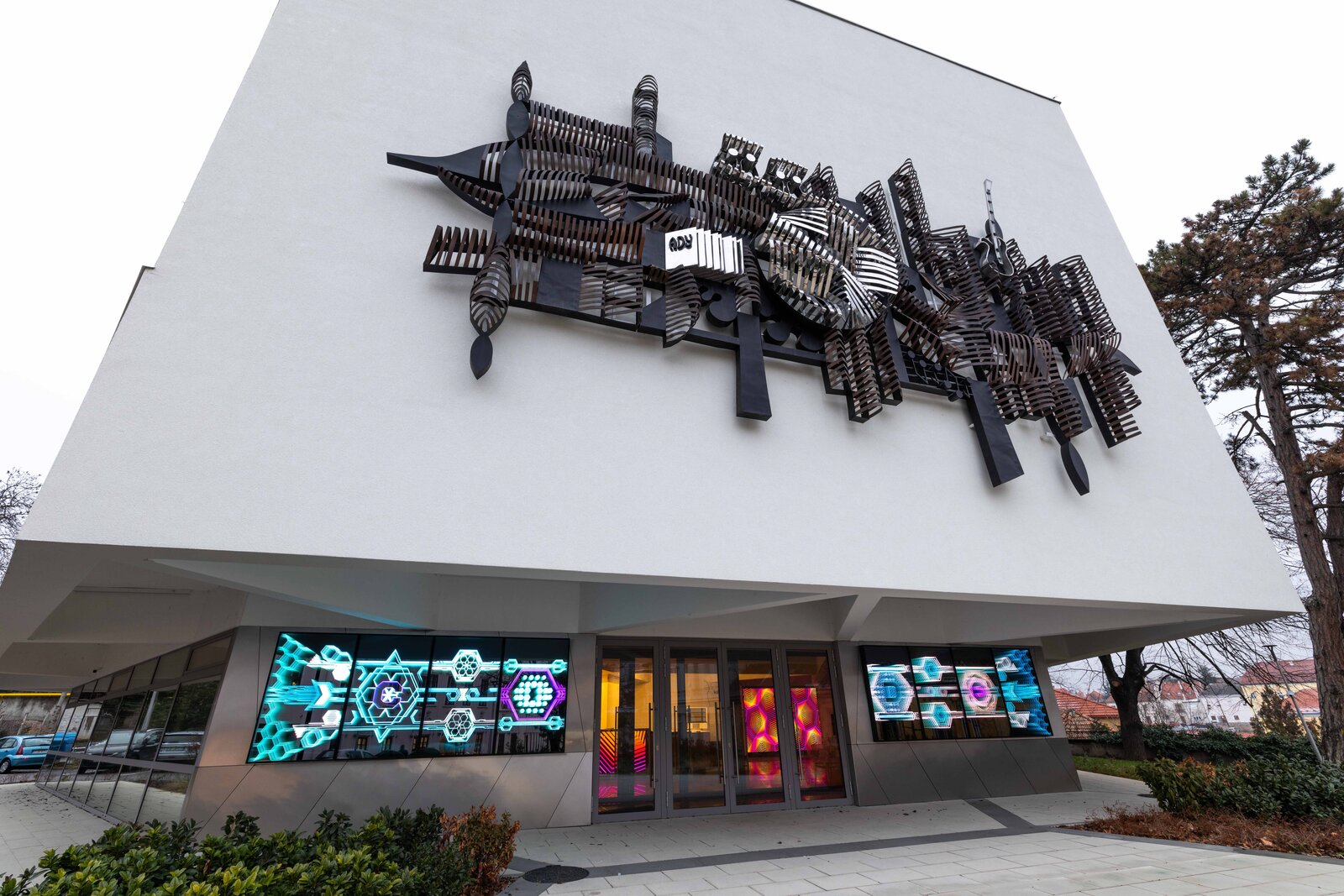
Have you ever had to come up with an unexpected or unusual solution that you never thought would work?
In short: all the time…
To elaborate: we constantly have visions - though, of course, not all of them become finished works. However, when we both believe an idea has real potential, we dedicate ourselves to making it happen, no matter the effort or challenges involved.
For example, back in 2022, we decided, as a result of our experiments, that we had to try to break out of flat surfaces and present a completely new visual world. This would have meant working with convex glass. However, finding the right material proved nearly impossible. We finally got the convex glass with great difficulty (it is important to add that we are talking about mirrors here, nor plastic plexiglass solutions), And it was when we managed to obtain it that we realised integrating it seamlessly into our system would be another major hurdle, as we always place great importance on flawless execution.
We wanted a glass or mirror panel with a central bulge, but such a material simply didn’t exist. We had to rely on our network, built over years, to create a custom solution. Once we finally secured this rare and costly material, we had to subject it to an intricate glassworking process. Fortunately, we found someone with a specialised distortion kiln who was willing to take on this challenging task. The process was so delicate that only one out of every ten glass pieces survived the physical reshaping.
In the end, the piece was successfully completed and premiered at Art Miami in December 2023, with resounding success.
How do you think technology is shaping the future of art?
The interaction and collaboration between technology and art is a fascinating subject. We ourselves draw a great deal of inspiration from technological advancements and the scientific world.
The evolution of light technology, in particular, continues to offer new possibilities in light art, with significant untapped potential still ahead. Those working with projection mapping techniques would likely agree - whether in terms of projector technology or the software developed for it, these advancements are continuously expanding the boundaries of artistic expression.